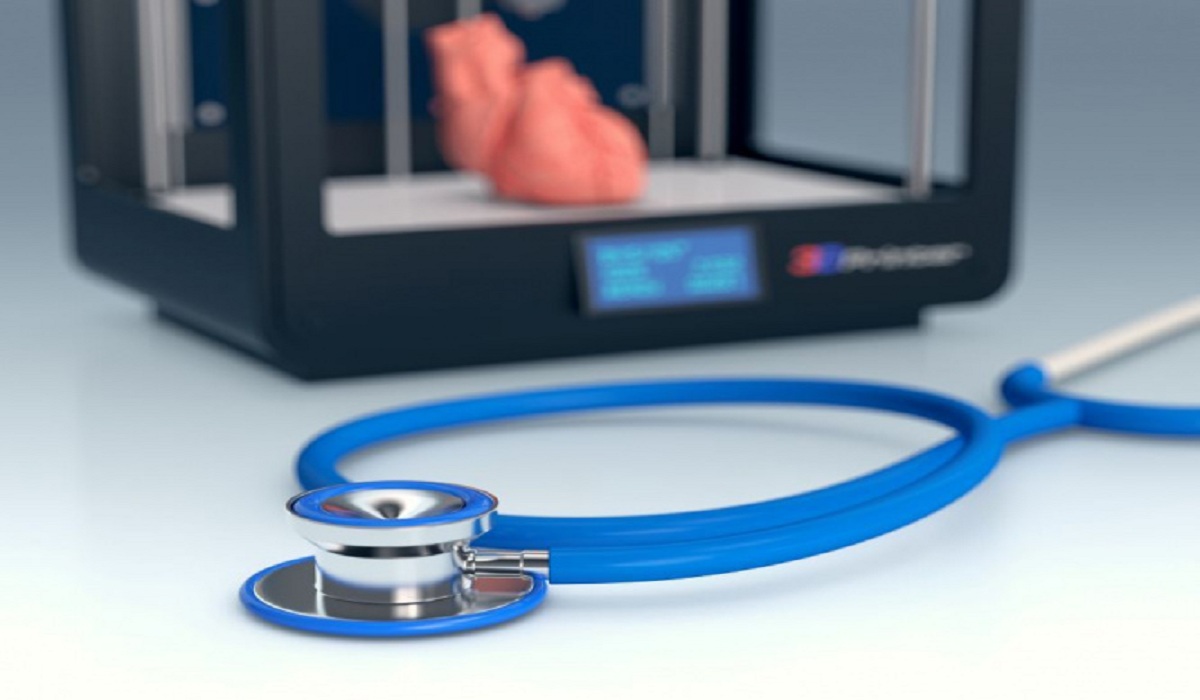Technological advancements, increasing public-private funding, easy development of customized medical products, and growing applications within the healthcare industry. Moreover, direct digital manufacturing, the expiry of key patents in the coming years, and the growing demand for organ transplant provide significant growth opportunities in the industry.
What the Market Looks Like?
Predicted to grow at a CAGR of 17.5% during the forecast period, the global 3D Printing Medical Devices Market is estimated to reach USD 1.88 Billion by the end of 2022. In 2017, North America held the largest market share, followed by Europe.However, stringent regulatory process and the dearth of trained professionals may hinder the growth of this market during the forecast period.
On the basis of component, the overall market is segmented into three broad categories, namely, equipment, materials, and software & services. The software & services market is estimated to command the most important share of the market in 2017. Increasing development of advanced software solutions to manufacture high-quality 3D-printed medical products is that the key factor driving the expansion of the services and software segment.
Based on technology, the market is segmented into suture 3D printing medical devices, beam melting (EBM), beam melting (LBM), photopolymerization, droplet deposition or extrusion-based technologies, PolyJet technology, and three-dimensional printing (3DP) or adhesion bonding or binder jetting. The photopolymerization segment is predicted to carry the most important share of the 3D printing medical devices market in 2017. This is attributed to the widespread application of this technology across the medical industry, for manufacturing surgical guides (orthopedic, dental, and CMF guides), prosthetics and implants, porous scaffolds, and dental restorations.
On the basis of type, the overall market is segmented into surgical guides, surgical instruments, prosthetics & implants, and tissue engineering products. The surgical guides segment is expected to account for the largest share of the market in 2017. 3D printing surgical guides as a neighborhood of surgical planning can significantly improve the precision of implant placement and supply accurate implant restorations. Due to this, the demand for precise and affordable guides is increasing; this is the key factor driving the growth of this market segment.
Download PDF Brochure @ https://www.marketsandmarkets.com/pdfdownloadNew.asp?id=90799911
What Drives the Market?
The growth of the global market for 3D Printing Medical Devices is primarily influenced by the following factors:
- Technological Advancements in 3D Printing
- Increasing Public-Private Funding for 3D Printing Activities
- Easy Development of Customized Medical Products Using 3D Printing
- Growing Applications of 3D Printing within the Healthcare Industry
Geographical growth scenario of 3D Printing Medical Devices Market
Geographically, In 2017, North America held the largest share of the overall market, followed by Europe. Its large share is attributed to the rising demand for organ transplants across this region. The presence of a highly developed healthcare infrastructure and significant government & private investments to develop advanced 3D printing technologies & applications are the key factors liable for the large share of this regional segment. Additionally, conferences and trade are also supporting the growth of the market in North America.
Request for Sample Pages @ https://www.marketsandmarkets.com/requestsampleNew.asp?id=90799911
Leading market players and strategies adopted
Major players in 3D printing medical devices market include Stratasys, Ltd. (Israel & US), 3D Systems Corporation (US), EnvisionTEC GmbH (Germany), Materialise NV (Belgium), EOS GmbH (Germany), Arcam AB (Sweden), Concept Laser GmbH (Germany), Renishaw plc (UK), Prodways Group (France), and 3T RPD Ltd. (UK). Product approvals, launches, and acquisitions were the key strategies adopted by players to grow and expand their presence within the 3D printing medical devices market.



